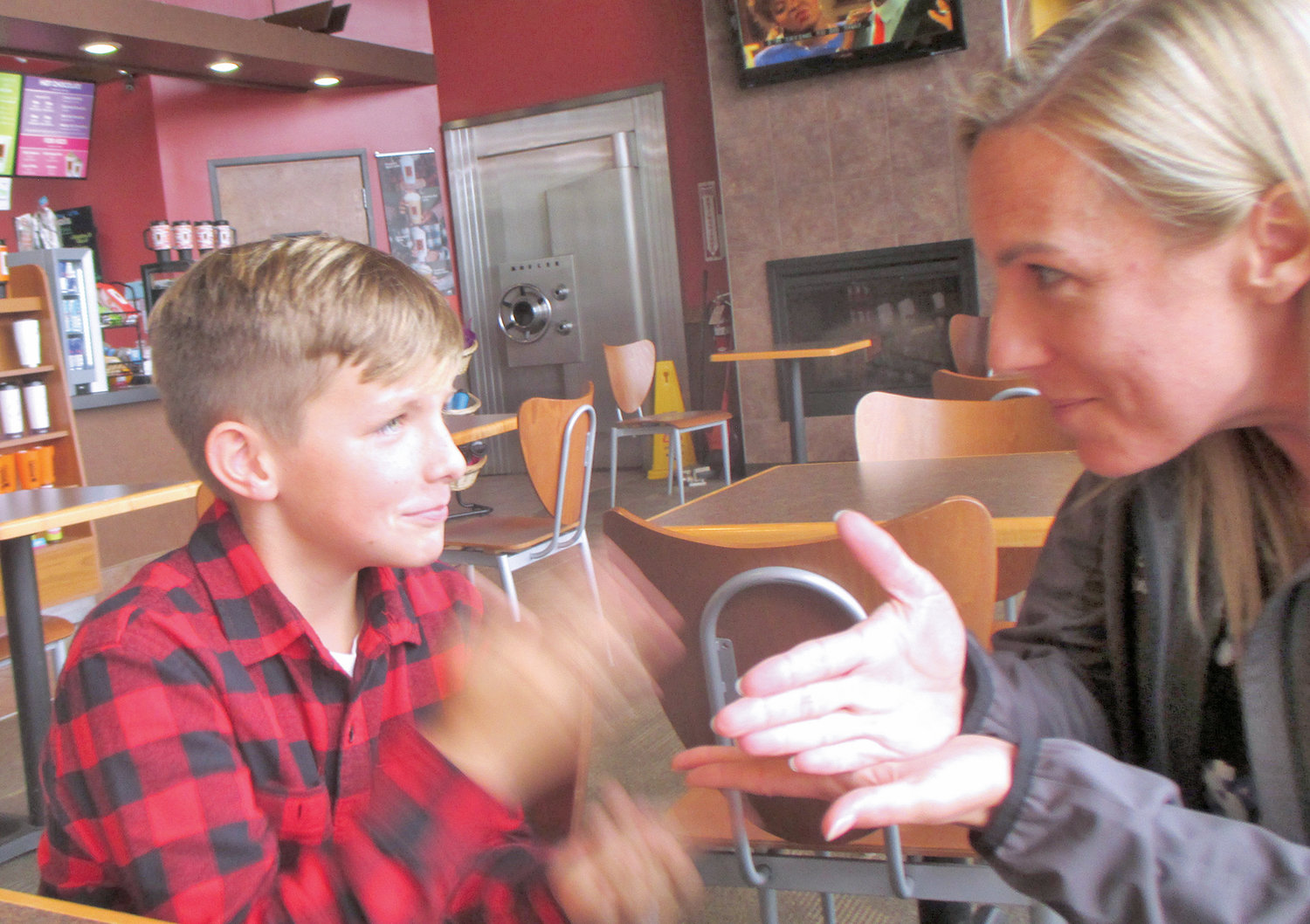Ingham County clerk, son give voice to residents with hearing loss - City Pulse

Chris Gray
Ingham County Clerk Barb Byrum said it took a while before doctors could tell her what was amiss with her younger son, Bryce.
He’s articulate with no noticeable signs of a disability. But careful childhood screenings kept turning up red flags. “He had failed many hearing tests in preschool,” she said.
Eventually, a physician at Sparrow Hospital ordered an MRI and discovered a missing bone in his left ear, which keeps him from hearing high pitches or understanding certain words with that ear. He has a full range of hearing in his right ear, which he uses to compensate for the hearing loss in the left.
Bryce was fitted with a hearing aid at the Michigan Ear Institute. Their health insurance doesn’t cover hearing aids, setting the family back $1,500 each time he needs one, and the battery needs changing every six days. Otherwise, the technology means the disability hardly sets him back at all.
“We’ve tried to normalize it as much as possible,” Byrum said.
The Michigan Department of Civil Rights recently commissioned a survey of state residents with hearing impairment called “Not Without Us.” Chief among its findings: The number of individuals who are deaf, deaf-blind and hard-of-hearing is much higher than previously surveyed.
The increase is driven most sharply by the number of people like Bryce who reported they were hard of hearing — estimated at 6.4% of the state, compared to 3.7% of residents in a 1989 Market Opinion Research study.
Much of that increase is driven by the state’s aging population, but better screenings also help net children. All three groups combine to contain 7.4% of the state’s residents — much higher than the 3.9% recorded in a 2017 American Community Survey conducted by the U.S. Census.
Incident rates were much higher in places with an older populations such as northern Michigan, particularly the Upper Peninsula, where 12% of respondents reported a hearing impairment. Rates were lower in the Detroit area, at 5% to 7%. Lansing, as part of Mid-Michigan, was also higher than the state average at 9%.
“This is the first time we’ve been able to get this accurate data of their community needs,” said Annie Urasky, director of the Deaf, Deafblind and Hard of Hearing Division of Civil Rights, through an interpreter. Urasky is deaf. “It’ll help identify gaps at where the need is.”
The deaf population was also up from the 1989 survey, from 0.1% of Michiganians to 0.46%. About 0.1% of respondents identified as deaf-blind in the new study. This group had not been charted previously.
People who are hard-of-hearing are distinct from deaf and deaf-blind individuals in key ways. They are less likely to identify as part of a coherent community and less likely to understand sign language — requiring a different approach for government and businesses to accommodate them, such as captions on video and large print.
A needs assessment accompanied the survey. The assessment was less scientific than the survey — it skewed white and female, and deaf individuals were proportionately higher to participate, but it was a chance for people with a hearing disability to actively inform the state of key metrics.
“We knew we had to get feedback directly from the community,” Urasky said. “This is a larger and deeper look at the barriers we’re facing and the opportunities we face in our community.”
The number of people reporting anxiety or depression was about twice the state average. The percentage of deaf and deaf-blind people reporting asthma was also almost 50 percent higher than the state average. Given hearing loss’s relation to age, people who are hard of hearing reported high rates of arthritis and heart disease.
Byrum and Bryce participated in the community needs assessment that went along with the survey, with the encouragement of Civil Rights Department spokesman Todd Heywood.
“We didn’t know what resources we had,” she said.
As they’ve navigated the system, Byrum said they found the schools at Mason, where Bryce is in the 4th Grade, very accommodating. The teachers already use a microphone so all the students can hear, and his educational plan only states that he cannot be ordered to remove his hearing aid. His brother required speech therapy, but Bryce never needed that.
He loves art and music, particularly Phil Collins and Lizzo. He’s also active in sports — even swimming, which in a split second of absent-mindedness jumping into the pool cost him a hearing aid.
“You were freaking out,” Bryce told his mom.
Bryce said he’d never been bullied for wearing a hearing aid, although some kids ask curious questions. For Halloween, he plans to go as a rock star, with ripped clothing.
https://ift.tt/2PzPwJ9



Comments
Post a Comment